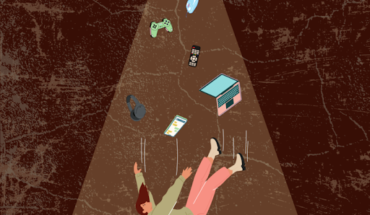BY DOMINIC PINO, STAFF WRITER
If you want some guidance on email etiquette, then you are in the wrong place. This article is email without romance, email as it actually is. Email can be an effective and efficient tool for professional communication, but all too often it is a quotidian quagmire. It is time for the real rules for email:
First, the reader of your email never cares as much about your email as you do—you can call this “Pino’s Law.”
We have all done it: type an email, save it as a draft, go back to it, change minor words and phrases (“thanks” or “thank you”?), save it again as a draft, go back again and erase the whole thing, rewrite an email that ends up looking eerily similar to the one that was just erased, hover over the send button for fifteen minutes, decide to let some friends read over it only to hover over the send button for fifteen more minutes. Finally you send it, soon realizing that you can’t take it back and fearing the ramifications of the email, pondering whether you used just the right words. Then, you see the notification that the response has arrived, and, trembling, you think, “What will it say?” Clicking on the message with nervous anticipation, you see:
“OK, thanks. Best, Dave”
Why do we do this to ourselves? In our example here, Dave did what every sane human does when receiving an email—he glanced at it.
Next time you get an email, note your own behavior. Your phone or computer notifies you of an email, and you stop everything you’re doing, treat it as if it were a revelation from heaven that demands your full attention and closely meditate on every word, right? Of course not! You either glance at the message or mutter, “I’ll get to it later,” and go on with your life. Guess what: other people do the same thing.
Secondly, short emails are always better than long ones. Professionals get lots of emails. Hundreds per day. They don’t have much time. Never use two lines if one line will do. Keep it brief.
Third, when possible, email should be used as a means to a better form of communication. Email is slow, messages get lost in the milieu of your inbox and many of the intricacies of language are lost when communication consists solely of text on the screen.
In fact, we all implicitly admit that email is not the best form of communication every time we email someone to set up a phone call. No one talks on the phone to set up an email. The phone is instant. It requires no typing and tone is conveyed easily, but cold-calling is weird. Email is a very effective path to a phone call.
Of course, this is not always possible. Being a superior form of communication, the phone is also a bigger commitment than email, and that is not a commitment that some people can make. But it often is. In a majority of offices, everyone has a desk phone. It’s sitting there, waiting to be used. In fact, its feelings get hurt when you don’t use its awesome, magical powers to speak directly to people in a faraway place. Don’t hurt the desk phone’s feelings. Use email to get to the phone.
Finally, proofread. This might seem contradictory to Pino’s Law. If the reader of your email does not care as much as you do, then you can get away with some grammar mistakes, right? Wrong! People expect you to be literate, so prove it by writing clearly and correctly. That way, it is much easier to glance at while comprehending a message quickly. Plus, if you follow my second rule, proofreading will not take very long.
I believe the world would be a much better place if these four rules were followed regularly. These are not exhaustive, and if I am so inclined, I might come up with more rules in a future article. But for now, remember this: Pino’s Law will save you time and stress, as will the corollary: It’s an email, not a marriage proposal, so for the love of all that is holy, hit send.



